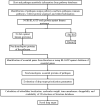Potential therapeutic targets for combating Mycoplasma genitalium
- PMID: 36532859
- PMCID: PMC9755450
- DOI: 10.1007/s13205-022-03423-9
Potential therapeutic targets for combating Mycoplasma genitalium
Abstract
Mycoplasma genitalium (M. genitalium) has emerged as a sexually transmitted infection (STI) all over the world in the last three decades. It has been identified as a cause of male urethritis, and there is now evidence that it also causes cervicitis and pelvic inflammatory disease in women. However, the precise role of M. genitalium in diseases such as pelvic inflammatory disease, and infertility is unknown, and more research is required. It is a slow-growing organism, and with the advent of the nucleic acid amplification test (NAAT), more studies are being conducted and knowledge about the pathogenicity of this organism is being elucidated. The accumulation of data has improved our understanding of the pathogen and its role in disease transmission. Despite the widespread use of single-dose azithromycin in the sexual health field, M. genitalium is known to rapidly develop antibiotic resistance. As a result, the media frequently refer to this pathogen as the "new STI superbug." Despite their rarity, antibiotics available today have serious side effects. As the cure rates for first-line antimicrobials have decreased, it is now a challenge to determine the effective antimicrobial therapy. In this review, we summarise recent M. genitalium research and investigate potential therapeutic targets for combating this pathogen.
Keywords: Cervicitis; Mycoplasma genitalium; Pelvic inflammatory disease; Sexually transmitted infections; Urethritis.
© King Abdulaziz City for Science and Technology 2022, Springer Nature or its licensor (e.g. a society or other partner) holds exclusive rights to this article under a publishing agreement with the author(s) or other rightsholder(s); author self-archiving of the accepted manuscript version of this article is solely governed by the terms of such publishing agreement and applicable law.
Conflict of interest statement
Conflict of interestThe authors declare that there is no competing conflict of interest.
Figures



Similar articles
-
Mycoplasma genitalium: An Emerging Sexually Transmitted Infection.Scientifica (Cairo). 2016;2016:7537318. doi: 10.1155/2016/7537318. Epub 2016 Feb 29. Scientifica (Cairo). 2016. PMID: 27034904 Free PMC article. Review.
-
Mycoplasma genitalium: Accurate Diagnosis Is Necessary for Adequate Treatment.J Infect Dis. 2017 Jul 15;216(suppl_2):S406-S411. doi: 10.1093/infdis/jix104. J Infect Dis. 2017. PMID: 28838072 Free PMC article. Review.
-
Mycoplasma genitalium, an emerging sexually transmitted pathogen.Med Mal Infect. 2012 Sep;42(9):381-92. doi: 10.1016/j.medmal.2012.05.006. Epub 2012 Sep 10. Med Mal Infect. 2012. PMID: 22975074 Review.
-
[Mycoplasma genitalium--aetiological agent of sexually transmitted infection].Tidsskr Nor Laegeforen. 2007 Sep 6;127(17):2233-5. Tidsskr Nor Laegeforen. 2007. PMID: 17828317 Review. Norwegian.
-
Time to manage Mycoplasma genitalium as an STI: but not with azithromycin 1 g!Curr Opin Infect Dis. 2014 Feb;27(1):68-74. doi: 10.1097/QCO.0000000000000030. Curr Opin Infect Dis. 2014. PMID: 24322592 Review.
References
Publication types
LinkOut - more resources
Full Text Sources
Research Materials

